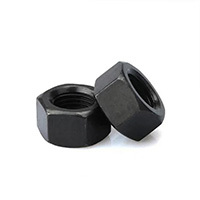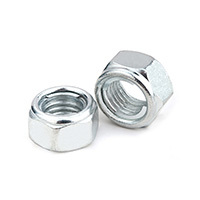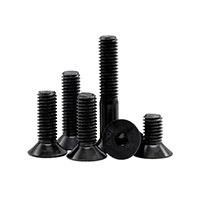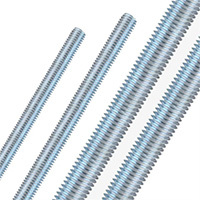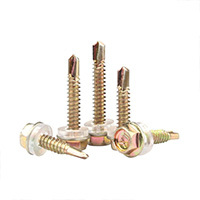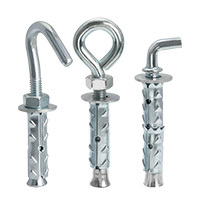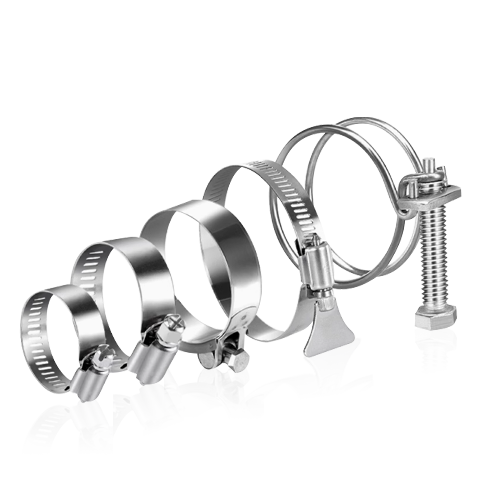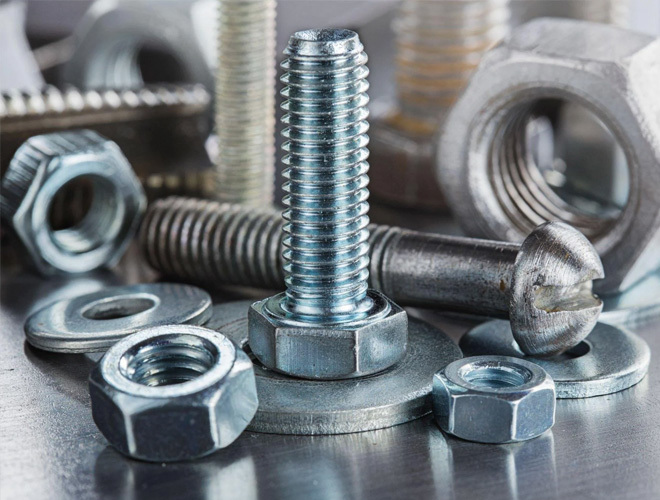The Critical Function of Expansion Bolts in Enhancing Earthquake-Resistant Structures
Jun 11,2025
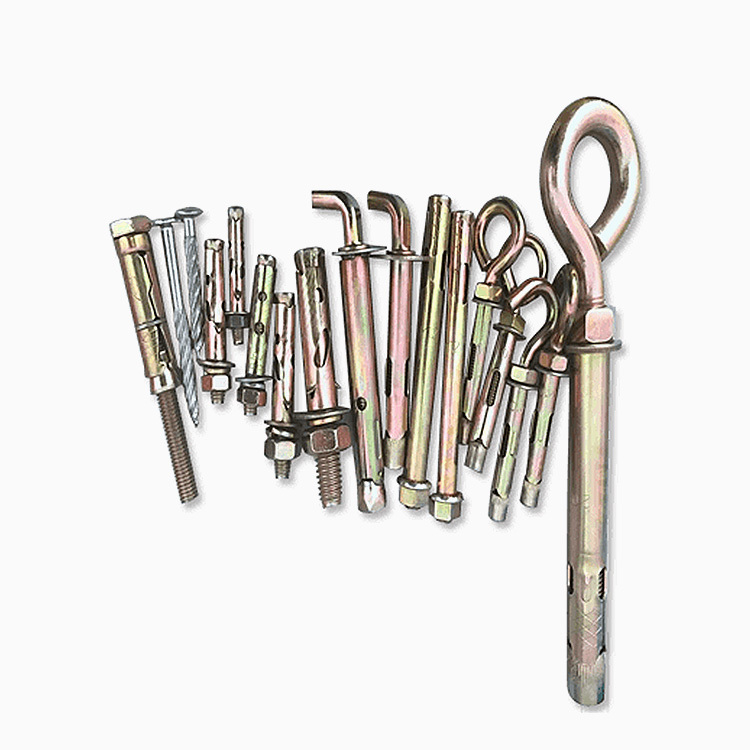
The Critical Function of Expansion Bolts in Enhancing Earthquake-Resistant Structures
Table of Contents
- 1. Introduction to Earthquake-Resistant Structures
- 2. Understanding Expansion Bolts
- 3. The Mechanics of Expansion Bolts
- 4. Role of Expansion Bolts in Earthquake Resistance
- 5. Advantages of Using Expansion Bolts
- 6. Best Practices for Installing Expansion Bolts
- 7. Case Studies: Successful Applications of Expansion Bolts
- 8. Common Questions About Expansion Bolts in Seismic Design
- 9. Conclusion
1. Introduction to Earthquake-Resistant Structures
The increasing frequency of earthquakes globally has necessitated the development of advanced engineering techniques aimed at protecting structures and lives. Earthquake-resistant structures are designed to withstand seismic forces and prevent catastrophic failures during seismic events. The integration of various construction components, such as expansion bolts, plays a crucial role in enhancing the structural integrity of these buildings.
2. Understanding Expansion Bolts
Expansion bolts are specialized fasteners used to anchor structures to concrete and masonry. These bolts feature an expandable sleeve that grips the surrounding material as the bolt is tightened. This mechanism ensures a secure hold, which is essential in high-stress environments, such as during an earthquake.
The Composition of Expansion Bolts
Expansion bolts come in various materials, including stainless steel, carbon steel, and galvanized steel, ensuring corrosion resistance and durability. Their design typically includes:
- A bolt with a threaded shaft
- An expansion sleeve or cone
- A nut for tightening
Types of Expansion Bolts
Various types of expansion bolts cater to different applications:
- **Wedge Anchors**: Ideal for heavy loads and are commonly used in concrete.
- **Sleeve Anchors**: Suitable for medium loads and can be used in both masonry and concrete.
- **Drop-in Anchors**: Used for overhead applications, providing high performance in cracked concrete.
3. The Mechanics of Expansion Bolts
The functionality of expansion bolts is largely based on their mechanical design. When the bolt is installed, it is inserted into a pre-drilled hole in concrete or masonry. As the bolt is tightened, the expansion sleeve expands against the walls of the hole, creating friction and drawing the bolt securely into place.
How Expansion Bolts Handle Seismic Forces
During an earthquake, structures experience lateral forces that can lead to failure if connections are not adequately secured. Expansion bolts provide the necessary grip to maintain connections among structural elements, preventing dislodgment and ensuring stability under seismic loads.
4. Role of Expansion Bolts in Earthquake Resistance
The role of expansion bolts in earthquake-resistant design cannot be overstated. They contribute to the overall performance of structures by:
- Improving the load distribution across structural elements
- Enhancing the ductility of connections, allowing for energy absorption during seismic events
- Preventing premature failure of anchorage systems under dynamic loads
Case Studies of Earthquake Resistance
Several notable examples illustrate the effectiveness of expansion bolts in real-world applications. In the 2010 Haiti earthquake, structures employing expansion bolts demonstrated significantly better performance compared to those that did not utilize them. This highlights the importance of proper anchorage in seismic-prone areas.
5. Advantages of Using Expansion Bolts
The advantages of expansion bolts extend beyond their immediate functionality. Some key benefits include:
- **Ease of Installation**: Expansion bolts can be quickly and easily installed with minimal equipment.
- **Versatility**: Suitable for various applications, including commercial, residential, and industrial settings.
- **Cost-Effectiveness**: Lower material and labor costs compared to other anchoring systems.
Long-Term Performance
Expansion bolts offer long-term reliability, thus reducing maintenance costs over time. Their resistance to corrosion and wear ensures that they maintain their grip and strength throughout the life of the structure.
6. Best Practices for Installing Expansion Bolts
Proper installation of expansion bolts is critical for maximizing their effectiveness. Here are some best practices to follow:
- **Select the Right Type**: Choose the appropriate expansion bolt based on the material and load requirements.
- **Drill Precise Holes**: Ensure holes are drilled to the correct diameter and depth to accommodate the bolt size.
- **Clean the Hole**: Remove any dust or debris from the hole before installation to ensure optimal contact between the bolt and the surrounding material.
- **Follow Manufacturer Guidelines**: Always adhere to the manufacturer's specifications for torque settings and installation procedures.
Regular Inspections
Conducting regular inspections of installed expansion bolts can prevent unforeseen failures. Look for signs of corrosion, loosening, or any structural damage in the vicinity of the bolts.
7. Case Studies: Successful Applications of Expansion Bolts
Numerous case studies exemplify the successful use of expansion bolts in earthquake-resistant designs. For instance:
- **The San Francisco-Oakland Bay Bridge**: During retrofitting, expansion bolts were crucial in enhancing the bridge's structural integrity against seismic activity, leading to its resilience during the 1989 Loma Prieta earthquake.
- **Los Angeles City Hall**: Retrofitting efforts included the use of expansion bolts to secure the building's façade, ensuring it could withstand considerable seismic forces.
8. Common Questions About Expansion Bolts in Seismic Design
What is the difference between expansion bolts and regular bolts?
Expansion bolts are specifically designed to anchor into concrete or masonry, expanding within the hole to create a secure grip, while regular bolts may not offer this feature and could lead to failure under stress.
How do I determine the correct expansion bolt size?
The correct size is determined by considering the load requirements, substrate material, and environmental conditions. Consult manufacturer guidelines for specific recommendations.
Can expansion bolts be reused?
It’s generally not recommended to reuse expansion bolts, especially after they have been subjected to significant stress. New bolts should be installed to ensure the integrity of the structure.
Are there any limitations to using expansion bolts?
Expansion bolts may not be suitable for every application, particularly in soft or unstable materials where they cannot achieve adequate grip. Alternative anchoring methods may be necessary in such cases.
What maintenance is required for expansion bolts?
Regular inspections should be conducted to check for signs of wear, corrosion, or loosening. Address any issues immediately to maintain structural integrity.
9. Conclusion
Expansion bolts play an indispensable role in the construction of earthquake-resistant structures. By enhancing the anchoring of critical components, these fasteners contribute significantly to the resilience and longevity of buildings situated in seismic zones. With proper selection, installation, and maintenance, expansion bolts not only ensure structural integrity during seismic events but also promote safety and peace of mind for occupants. Investing in quality expansion bolts and adhering to best practices can make a substantial difference in earthquake preparedness and response, ultimately saving lives and property.
Hot Tags:
Contact
E-mail:
Phone:
Address:
Yongnian Southwest Development Zone, Handan City, Hebei Province
PRODUCT SEARCH
Search And Quickly Find The Products You Need
The company has a modern production workshop and a professional technical team. It has introduced advanced automated production equipment from home and abroad, strictly controls every production link, is customer-centric, and is committed to providing customers with high-quality products and services.
Continue Search OR Customize Products



